a series by Christopher James looking at the 'Gay Best Friend' trope
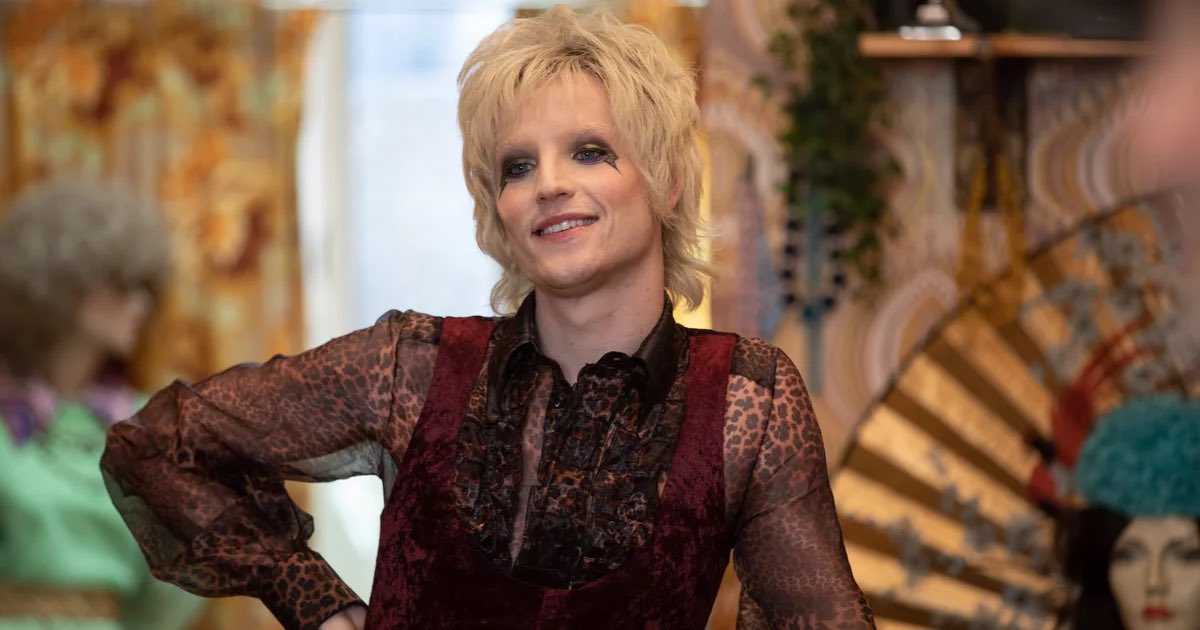 How many Arties are we going to see at Halloween this year?The “Gay Best Friend” in romantic comedies used to be the de facto example of empty virtue signaling. However, like most things in the film world, Disney has decided to do it bigger and... better? This weekend, Craig Gillespie’s Cruella has touted that it features “Disney’s first openly gay character.” All gays stand on the shoulders of their forefathers, and Artie (played by John McCrea) is no exception. In fact, his claim to the title is laughable not just because of how sanitized his character is, but also because Disney has declared having their “first openly gay character” more times than the boy who cried wolf.
How many Arties are we going to see at Halloween this year?The “Gay Best Friend” in romantic comedies used to be the de facto example of empty virtue signaling. However, like most things in the film world, Disney has decided to do it bigger and... better? This weekend, Craig Gillespie’s Cruella has touted that it features “Disney’s first openly gay character.” All gays stand on the shoulders of their forefathers, and Artie (played by John McCrea) is no exception. In fact, his claim to the title is laughable not just because of how sanitized his character is, but also because Disney has declared having their “first openly gay character” more times than the boy who cried wolf.
So how does Artie compare to the other “first openly gay characters” in the Disney universe?
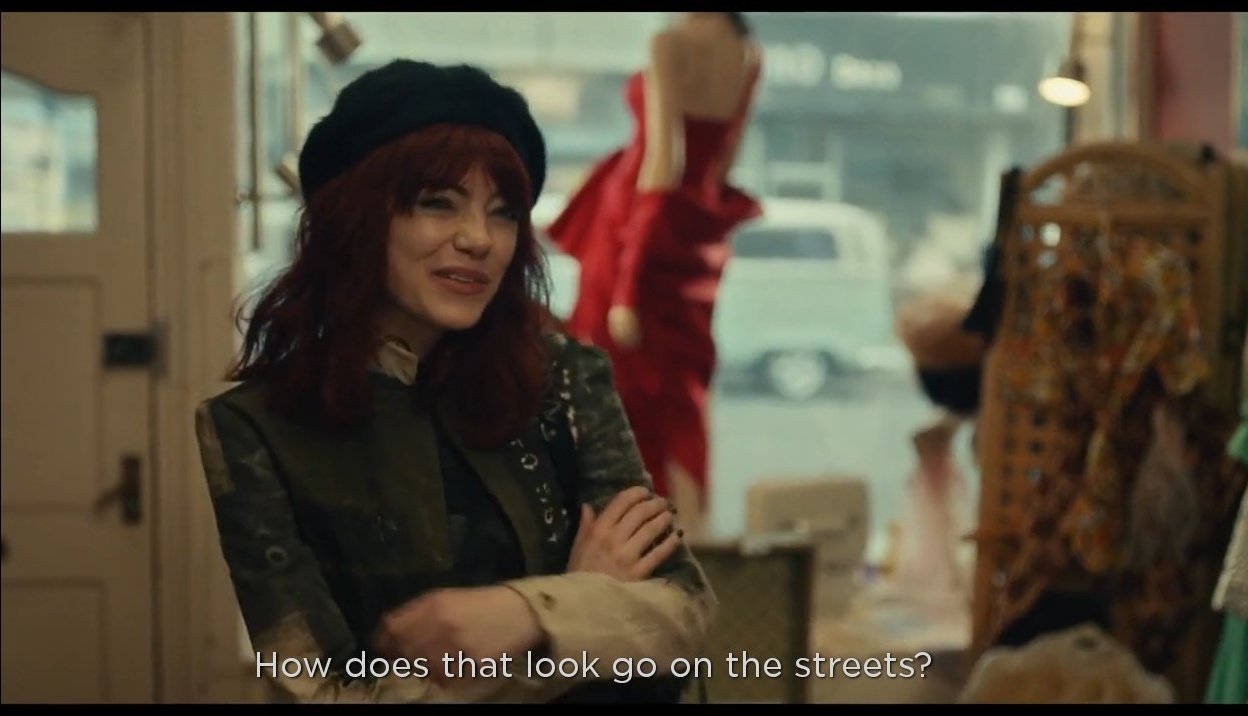
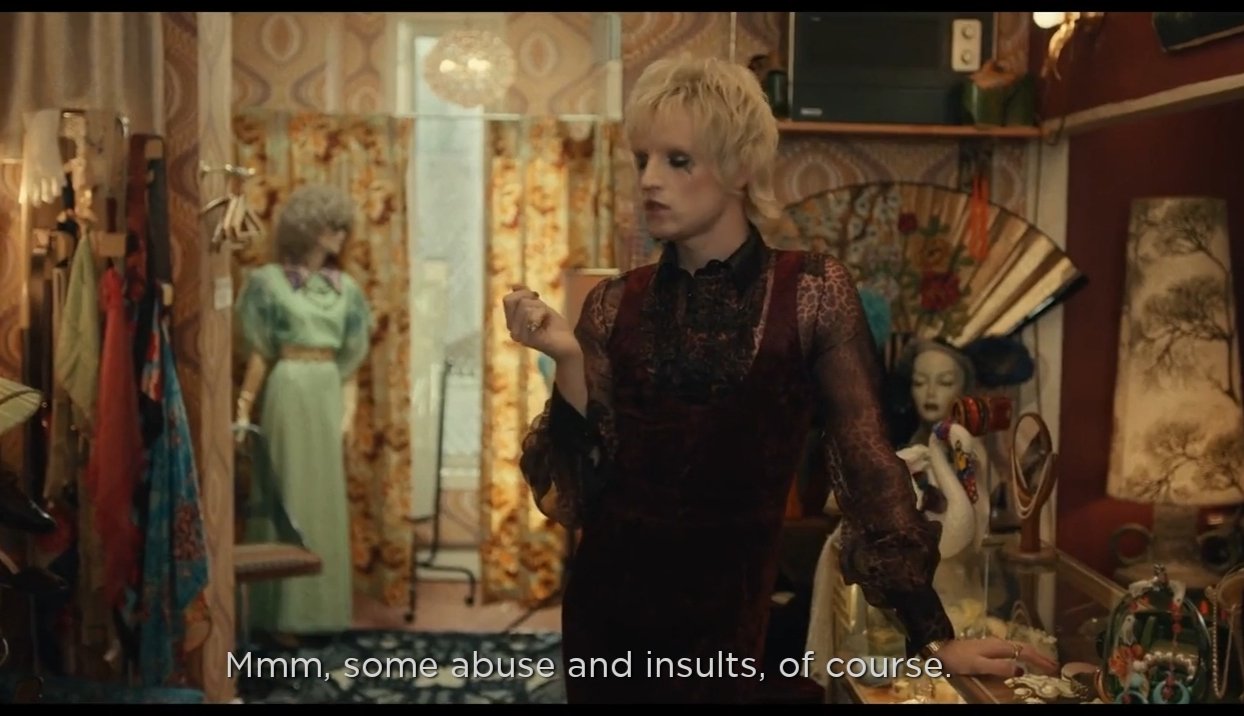
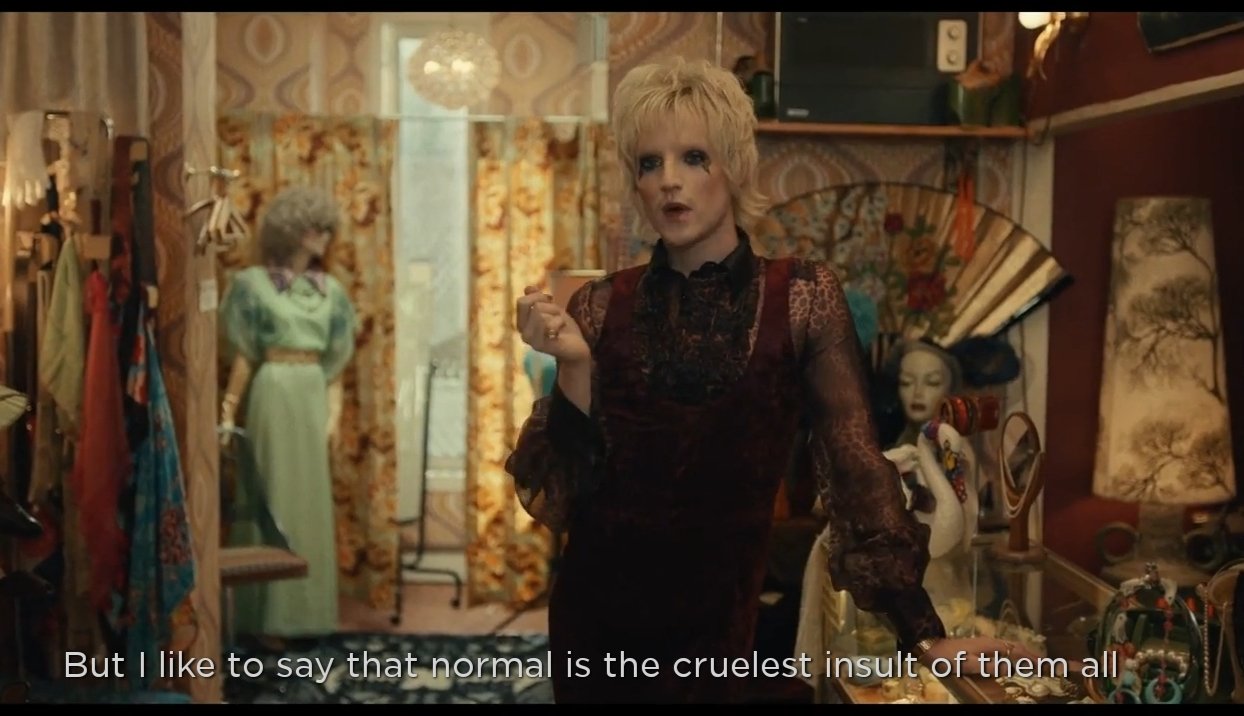
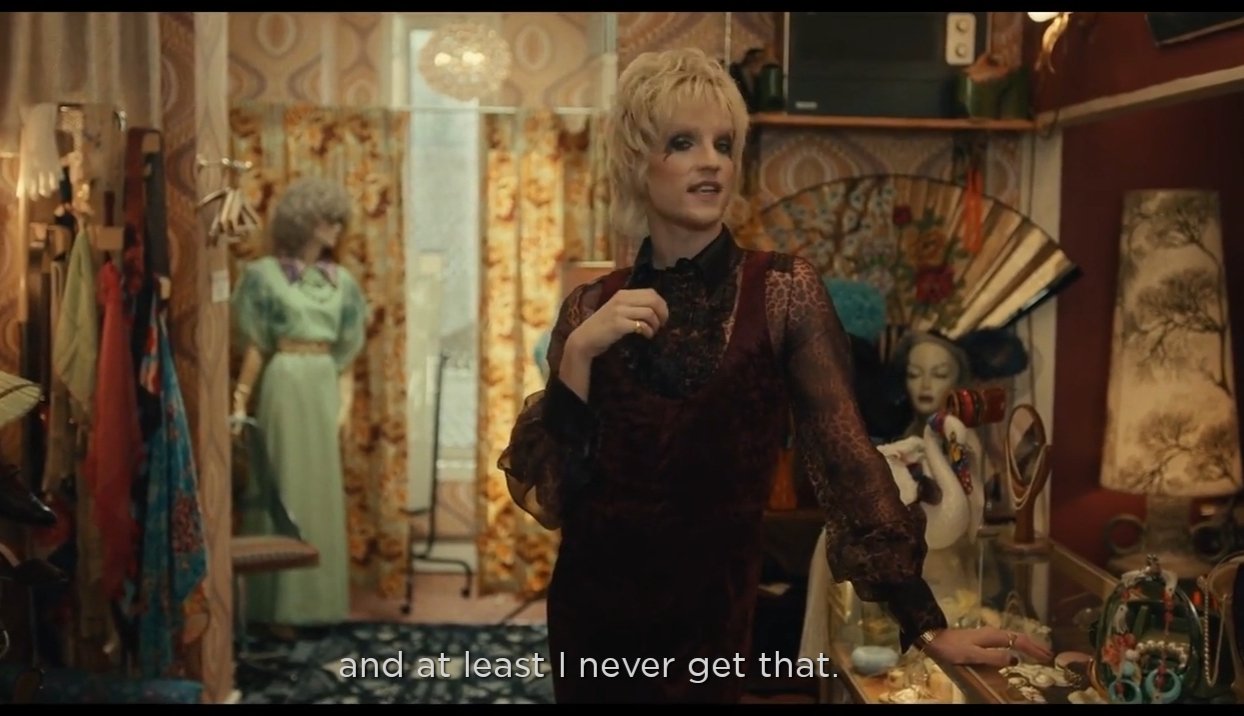
Estella (Emma Stone) enters Artie’s store after noticing a window display of an old dress made by her new boss, the Baroness (Emma Thompson). His flamboyance isn’t just in his heavy eye makeup or gregarious outfits. He introduces himself as “Artie, like Art, as in ‘Work of’.” Estella later employs Artie as she transforms herself into Cruella, a fashion maven. She mentions that she chose him because he knows what it's like to be an outsider, like her. While it is clear to anyone with two eyes that Artie is queer, this is the closest it comes to being spoken. For all its fun with aesthetics, at least Cruella understands that being a femme man in the 70s wasn’t exactly the ticket to wide public acceptance.
McCrea makes Artie a fun new addition to the world of Cruella. He nails every sassy one-liner with a droll whisper, almost as if he were the British cousin of April Ludgate. It also helps that he wears the wardrobe well, which feels like David Bowie by way of Tim Burton. Yet, that’s all Artie is given to do. Though he's involved with the schemes Jasper (Joel Fry) and Horace (Paul Walter Hauser, a standout) have a push and pull relationship with Estella/Cruella that stems from decades of history. Artie is more like a Cruella sidekick, with no ties to the other characters. In so many ways, Artie feels like many another iteration of the 90s gay best friend we’ve been talking about. He’s femme, funny, friendly and forgettable.
In many ways Cruella ups the ante of the Disney remake by being a wild, audacious swing. Yet, like a pendulum, it often swings right back, playing it safe just as it tiptoeing into interesting terrain. The good outweighs the bad, though, and this is certainly the better direction for Disney remakes to go in. They should be less focused on remaking the things that worked about original films and instead using the IP as a jumping off point for an original idea. Artie is a step in the right direction, but still just another half step. Disney has yet to have an openly, canonically gay character in one of their tentpole releases despite numerous claims to the contrary.
Like these...
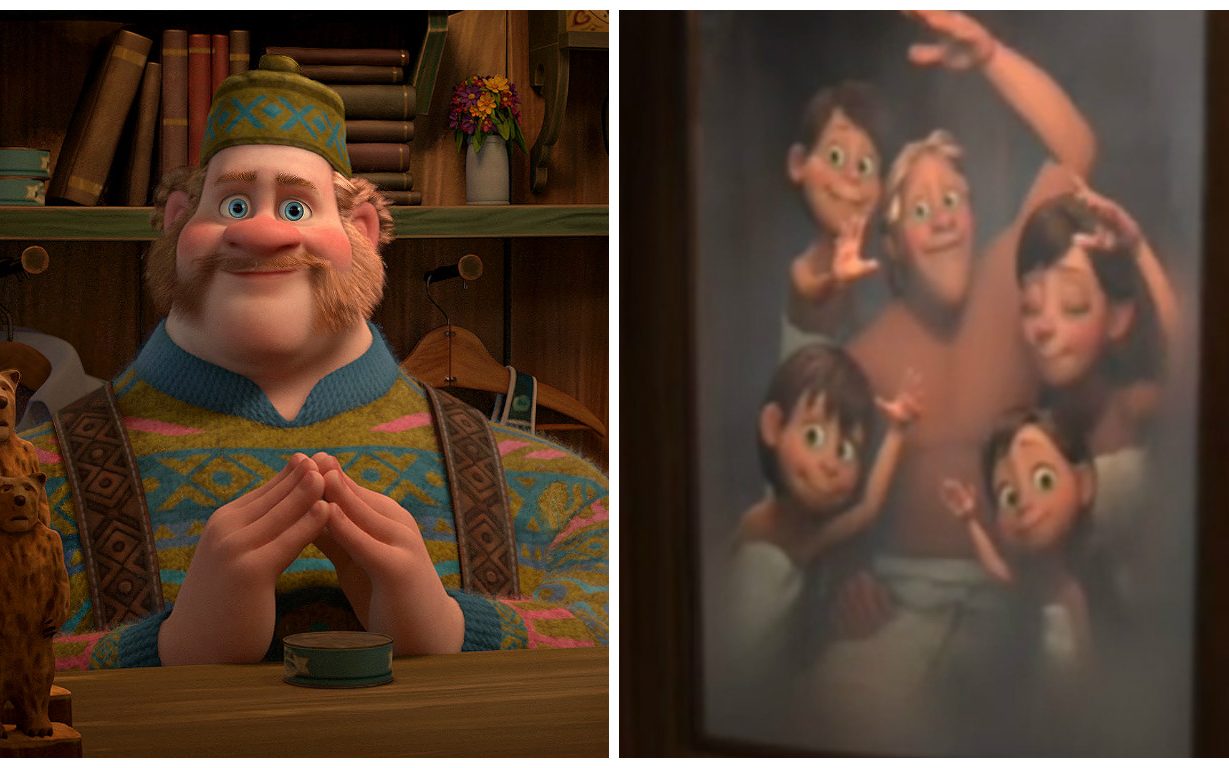 A modern "Frozen" family.
A modern "Frozen" family.
Oaken’s Family Situation in Frozen (2013)
It was the shot that launched a thousand Tumblr boards. The genial shopkeeper, Oaken (Chris Williams), makes a quick reference to his family staying in the hot sauna once the cold front came in (honestly, a very gay move). The movie then quickly flashes to a group of people in said sauna. It appears that there’s one man and several kids. Is this man his husband? An estranged brother? A Full House situation? It’s never explained and we move on. Yet, the internet took it to mean Oaken had a husband. Frozen is no stranger to gay rumors. Elsa (Idina Menzel) was widely thought of as lesbian for adult fans and there was an online movement to #GiveElsaAGirlfriend. But these winks and nods to audiences that characters might be gay is more akin to gay coding in the '40s and '50s. Surely we’ve come farther in the 21st century?
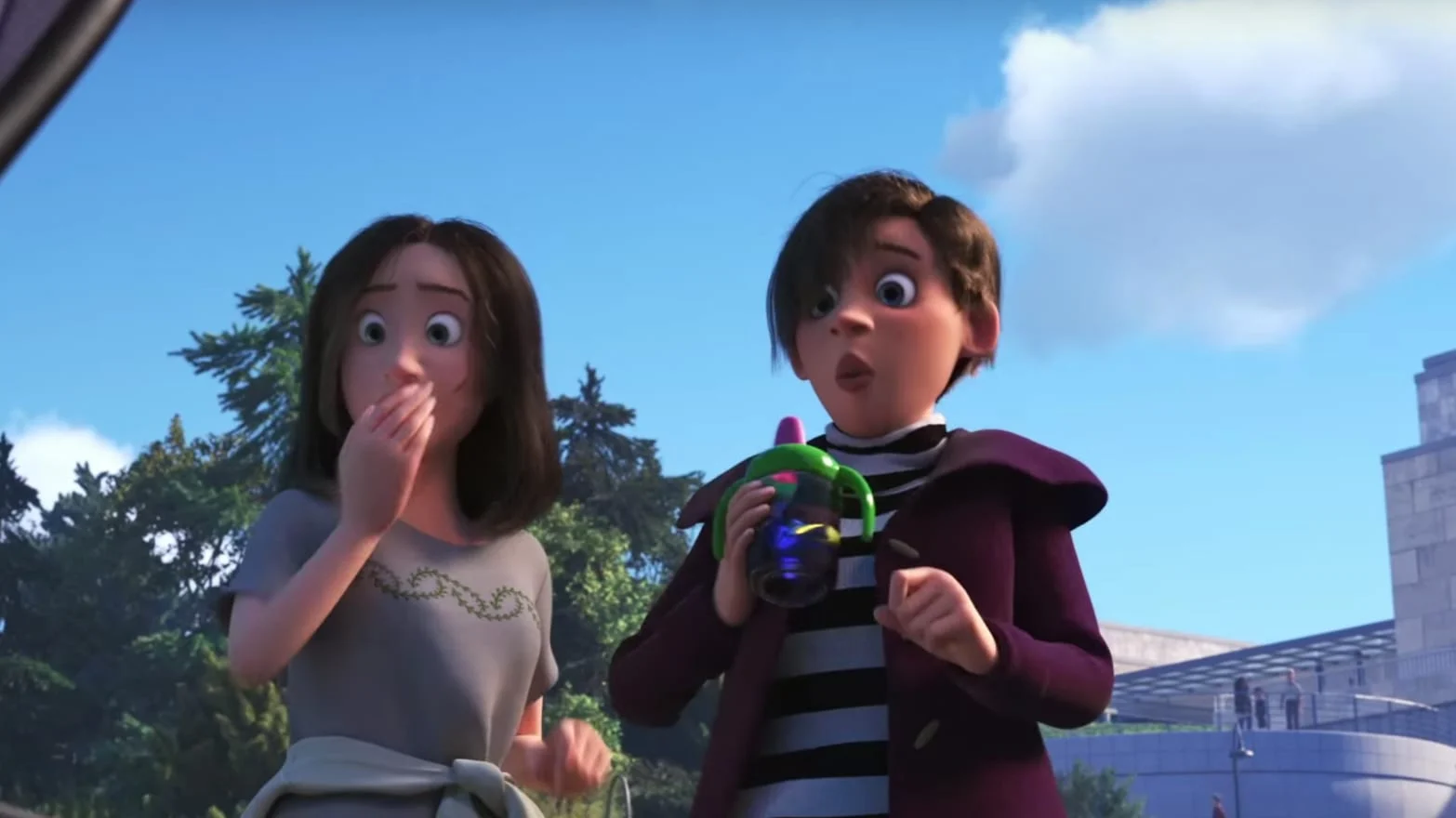 The look of the religious right seeing just a frame of two women who might be in a relationship together ("Finding Dory" - 2017).
The look of the religious right seeing just a frame of two women who might be in a relationship together ("Finding Dory" - 2017).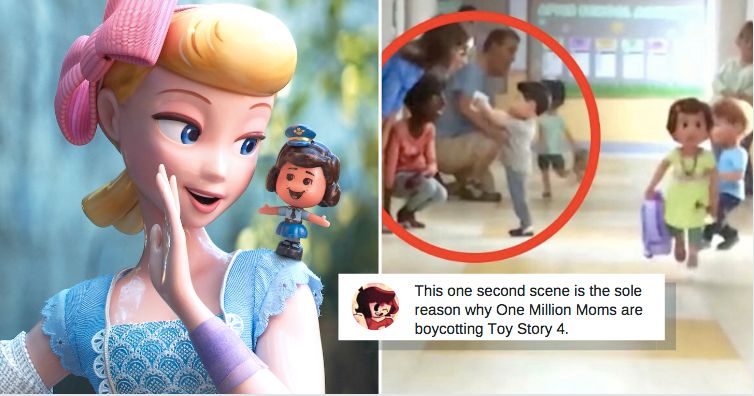 Pssst... that girl has two Moms ("Toy Story 4" - 2019).
Pssst... that girl has two Moms ("Toy Story 4" - 2019).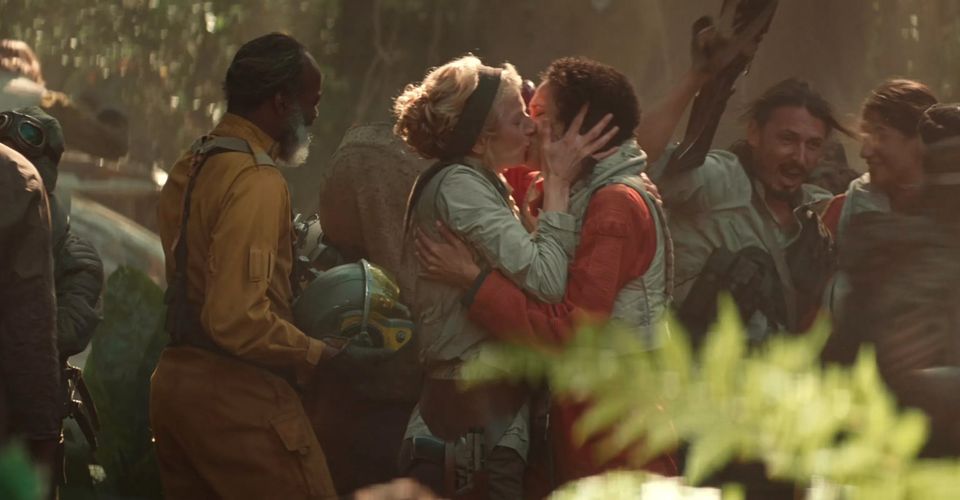 Even in a galaxy far far away, it took nine movies to get one frame of lesbian kissing ("Star Wars Episode IX: The Rise of Skywalker" - 2019).
Even in a galaxy far far away, it took nine movies to get one frame of lesbian kissing ("Star Wars Episode IX: The Rise of Skywalker" - 2019).
Background Lesbians (2017 - 2019)
A fun game of 'I Spy' could be played in the Disney films of the 2010s. Spot the token lesbians in a crowd reaction shot. This all began when two women were seen with a child for a split second during Finding Dory. Scholars are still trying to figure out were these two women lesbians, or merely just friends. Director Andrew Stanton didn’t help clarify this mystery when he said “They can be whatever you want them to be. There’s no right or wrong answer.” That’s right, lesbians can be anything you want them to be.
Each time lesbians are seen in the background of a Disney movie, they get bolder. It’s like they WANT to be noticed. In 2019’s Toy Story 4, lesbian Moms are shown not once, but TWICE. They have the audacity to drop their daughter off in the same class that the new central child of the franchise, Bonnie, is also a part of. Later in the movie, these mothers pick up their daughter and hug her. These split second frames were enough to get the film boycotted by One Million Moms.
Those One Million Moms weren’t ready for what came next. In Star Wars Episode IX: The Rise of Skywalker, the lesbians got names and even shared a kiss. After the Resistance defeats the First Order, all of the characters can be seen celebrating. This also means Commander Larma D'Acy (Amanda Lawrence) and her pilot wife Wrobie Tyce (Vinette Robinson) share a kiss for a split second. Certain countries edited out this reaction shot. Many people blinked and missed the kiss, which was easy to do. Yet, Disney was able to get a fair bit of press touting another representational “first.”
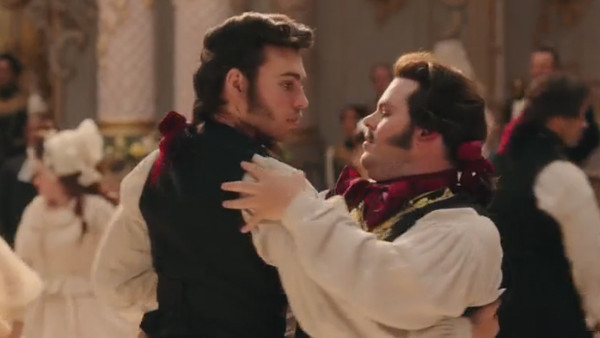 Like so many gay men before him, LeFou (Josh Gad) spent too much time lusting after Gaston (Luke Evans).
Like so many gay men before him, LeFou (Josh Gad) spent too much time lusting after Gaston (Luke Evans).
LeFou (Josh Gad) and his “Exclusively Gay Moment” in Beauty and the Beast (2017)
To be fair, LeFou’s gayness exists outside the much publicized “exclusively gay moment,” which was very much oversold. Gad hams it up as LeFou, Gaston’s (Luke Evans) assistant. This hearkens back to the original film, where LeFou was a steadfastly loyal fool. However, in the remake, LeFou is seen looking at Gaston with some longing during the “Gaston” musical number, definitely (visually) harboring a crush. When given a chance at the final ball scene, LeFou chooses to dance with another man. This stands as the “exclusively gay moment” Disney publicized for weeks leading up to the film. This "exclusively gay moment" was also exclusively available in countries where homosexuality is legal. This begs the question: does LeFou’s representation matter when it is so slight and easily removed? At least his sexual orientation informs his character’s decisions throughout the movie.
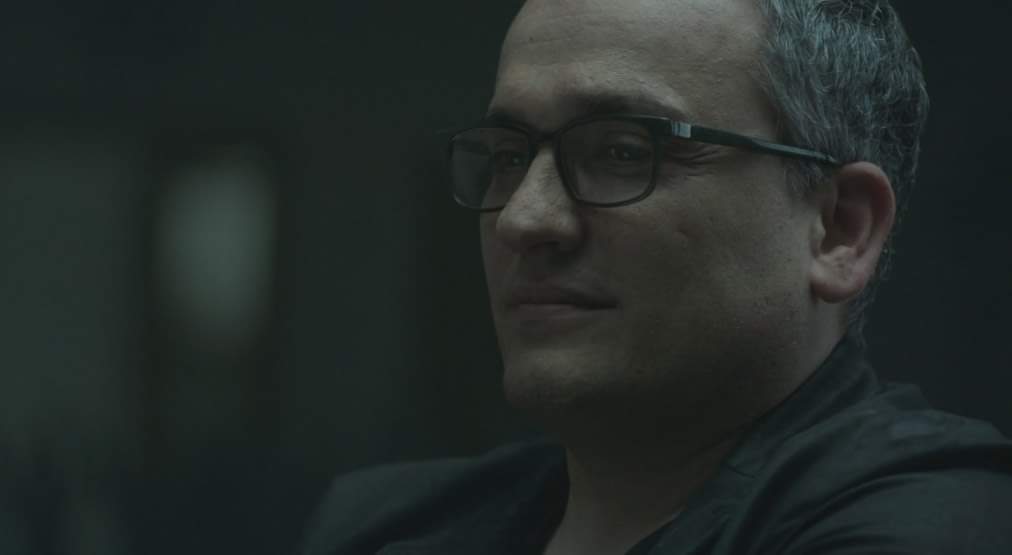 Turns out, the support group isn't just about Joe Russo's character being a Mets fan.
Turns out, the support group isn't just about Joe Russo's character being a Mets fan.
The Sad Gay from Avengers: Endgame (2019)
You gotta hand it to them, we gay men do love therapy. Marvel teased to viewers that we would get our first out gay character in the Marvel Cinematic Universe with the epic Avengers: Endgame Phase Three finale. Of course, that character wouldn’t be a superhero. Co-director Joe Russo plays a man at a support group following Thanos’ Snap that made half the world’s population fade to dust. He describes a date with another man where both of them end up crying. Captain America comforts the crying homosexual, telling him that it’s normal for everything to feel weird with so many loved ones gone. It’s a nice moment and does establish that, yes, gay people do exist in the world of Marvel. Yet, it would be a stretch to call it a gay character. To borrow their previous phrase, it’s just another, very editable, “exclusively gay moment.”
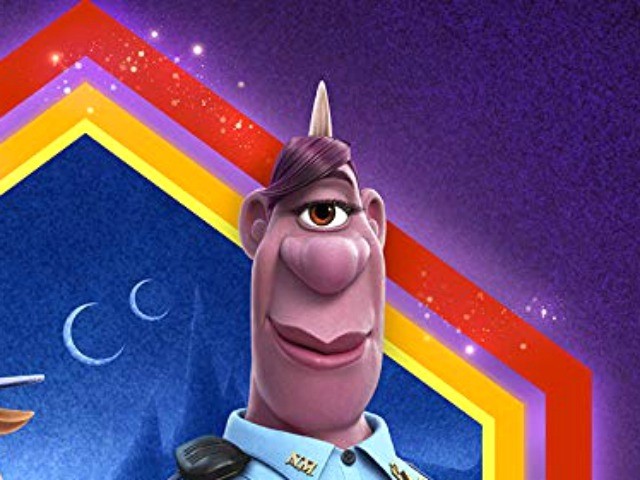 Did she know the pandemic was coming? Let's discuss.
Did she know the pandemic was coming? Let's discuss.
Lena Waithe’s One-Eyed Cop in Onward (2020)
For many, Onward was the last film people saw before the pandemic forced us all inside our homes. I guess those evangelicals were right, having a one-eyed female cop refer to “her wife” would bring about the end of the world! Jokes aside, Waithe’s Officer Spector exists only for this PR angle. She appears in one scene where some ham-fisted dialogue reveals that she has a wife waiting at home. Not only does she not have any bearing on the plot, but her queerness is her only defining characteristic. This cameo and Disney's desire to claim "gay firsts" was good enough for Officer Spector to get her own character poster in the marketing.
Conclusion
It’s no secret why Disney doesn’t push further into having more overt queer characters. Much of their money is made overseas in countries with even worse records on LGBTQ+ issues than here in America. Here at home there are certainly large contingents of the population that object to positive family-friend queer portrayals, like the ones seen on Adventure Time, Steven Universe, Arthur, ParaNorman, The Mitchells vs. the Machines, The Bravest Knight and more. While Artie is far from the most fully formed queer character, or even called that in the film, he has already sparked outrage from Republican politicians. Disney can and should put more characters like Artie in their movies. Yet, they shouldn’t take credit for having the “first openly gay character” unless they are going to make them textually gay and central to the plot. Anything other than that is just lip service and PR outreach attempts to queer audiences.
Previously in Gay Best Friend
pre stonewall
- Plato (Sal Mineo) in Rebel Without a Cause (1955)
- Sebastian Venable in Suddenly Last Summer (1959)
- Calla Mackie (Estelle Parsons) in Rachel Rachel (1968)
post stonewall
- Erich (Norbert Weisser) in Midnight Express (1978)
- Toddy (Robert Preston) & Squash (Alex Karras) in Victor/Victoria (1982)
- Dolly Peliker (Cher) in Silkwood (1983)
- Buffy (Charles Grodin) in Woman in Red (1984)
1990s and the 2000s
- Tim (Nathan Lane) in Frankie & Johnny (1991)
- Hedy (Jennifer Jason Leigh) & Graham (Peter Friedman) in Single White Female (1992)
- Sammy Gray (Steve Zahn) in Reality Bites (1994)
- Gareth (Simon Callow) and Matthew (John Hannah) in Four Weddings and a Funeral (1994)
- Jane (Whoopi Goldberg) in Boys on the Side (1995)
- Sterling (Patrick Stewart) in Jeffrey (1995)
- George Downs (Rupert Everett) in My Best Friend’s Wedding (1997)
- Simon (Greg Kinnear) in As Good As It Gets (1997)
- George Hanson (Paul Rudd) in The Object of My Affection (1998)
- Bill Truitt (Martin Donovan) in The Opposite of Sex (1998)
- Michael (Stuart Wells) in Billy Elliot (2000)
- Robert (Rupert Everett) in The Next Best Thing (2000)
- Patti (Sandra Oh) in Under the Tuscan Sun (2003)
- Damian (Daniel Franzese) in Mean Girls (2004)
- Nigel (Stanley Tucci) in The Devil Wears Prada (2006)
- Wallace Wells (Kieran Culkin) in Scott Pilgrim vs the World (2010)
- Brandon (Dan Byrd) in Easy A (2010)
the now